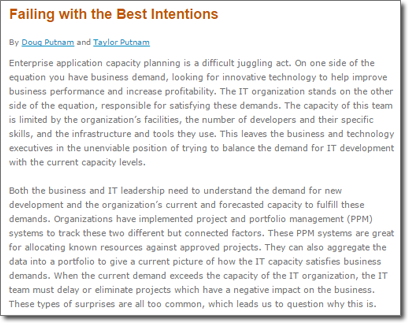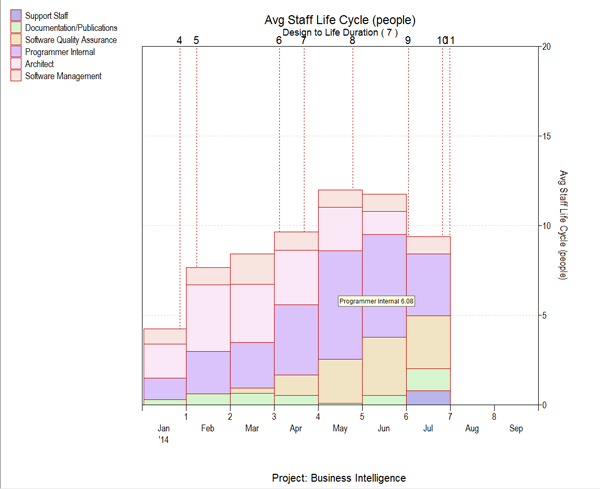New Article: Failing with the Best Intentions

Enterprise application capacity planning is a difficult juggling act. On one side of the equation you have business demand, looking for innovative technology to help improve business performance and increase profitability. The IT organization stands on the other side of the equation, responsible for satisfying these demands. The capacity of this team is limited by the organization’s facilities, the number of developers and their specific skills, and the infrastructure and tools they use. This leaves the business and technology executives in the unenviable position of trying to balance the demand for IT development with the current capacity levels. In this article for Software Magazine, Doug Putnam and Taylor Putnam-Majarian demonstrate how top-down parametric estimation can be leveraged by organizations to manage capacity and demand effectively.


 Since I work for a
Since I work for a